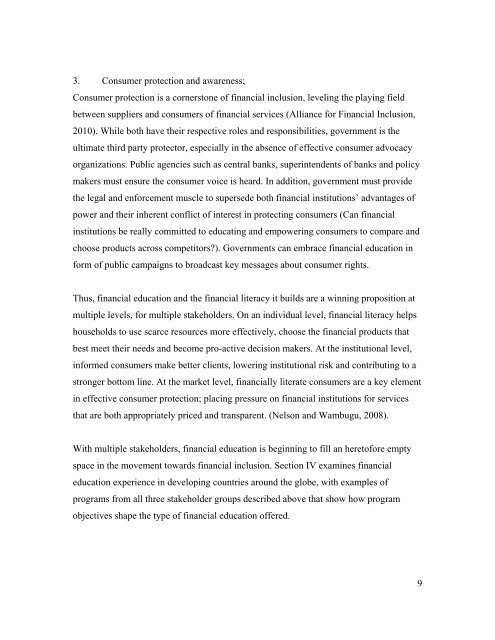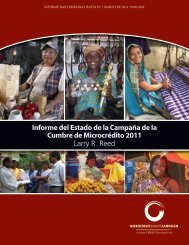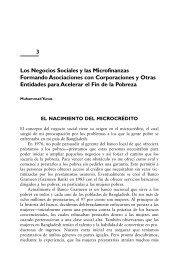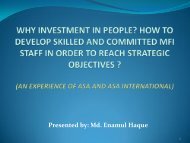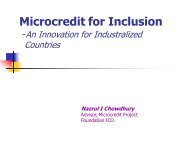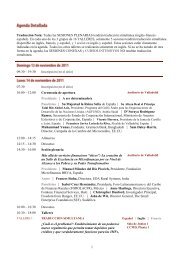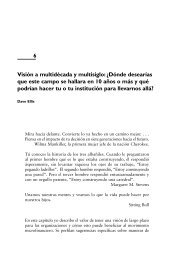Financial Literacy: A Step for Clients towards Financial Inclusion
Financial Literacy: A Step for Clients towards Financial Inclusion
Financial Literacy: A Step for Clients towards Financial Inclusion
You also want an ePaper? Increase the reach of your titles
YUMPU automatically turns print PDFs into web optimized ePapers that Google loves.
3. Consumer protection and awareness;<br />
Consumer protection is a cornerstone of financial inclusion, leveling the playing field<br />
between suppliers and consumers of financial services (Alliance <strong>for</strong> <strong>Financial</strong> <strong>Inclusion</strong>,<br />
2010). While both have their respective roles and responsibilities, government is the<br />
ultimate third party protector, especially in the absence of effective consumer advocacy<br />
organizations. Public agencies such as central banks, superintendents of banks and policy<br />
makers must ensure the consumer voice is heard. In addition, government must provide<br />
the legal and en<strong>for</strong>cement muscle to supersede both financial institutions’ advantages of<br />
power and their inherent conflict of interest in protecting consumers (Can financial<br />
institutions be really committed to educating and empowering consumers to compare and<br />
choose products across competitors?). Governments can embrace financial education in<br />
<strong>for</strong>m of public campaigns to broadcast key messages about consumer rights.<br />
Thus, financial education and the financial literacy it builds are a winning proposition at<br />
multiple levels, <strong>for</strong> multiple stakeholders. On an individual level, financial literacy helps<br />
households to use scarce resources more effectively, choose the financial products that<br />
best meet their needs and become pro-active decision makers. At the institutional level,<br />
in<strong>for</strong>med consumers make better clients, lowering institutional risk and contributing to a<br />
stronger bottom line. At the market level, financially literate consumers are a key element<br />
in effective consumer protection; placing pressure on financial institutions <strong>for</strong> services<br />
that are both appropriately priced and transparent. (Nelson and Wambugu, 2008).<br />
With multiple stakeholders, financial education is beginning to fill an hereto<strong>for</strong>e empty<br />
space in the movement <strong>towards</strong> financial inclusion. Section IV examines financial<br />
education experience in developing countries around the globe, with examples of<br />
programs from all three stakeholder groups described above that show how program<br />
objectives shape the type of financial education offered.<br />
9


